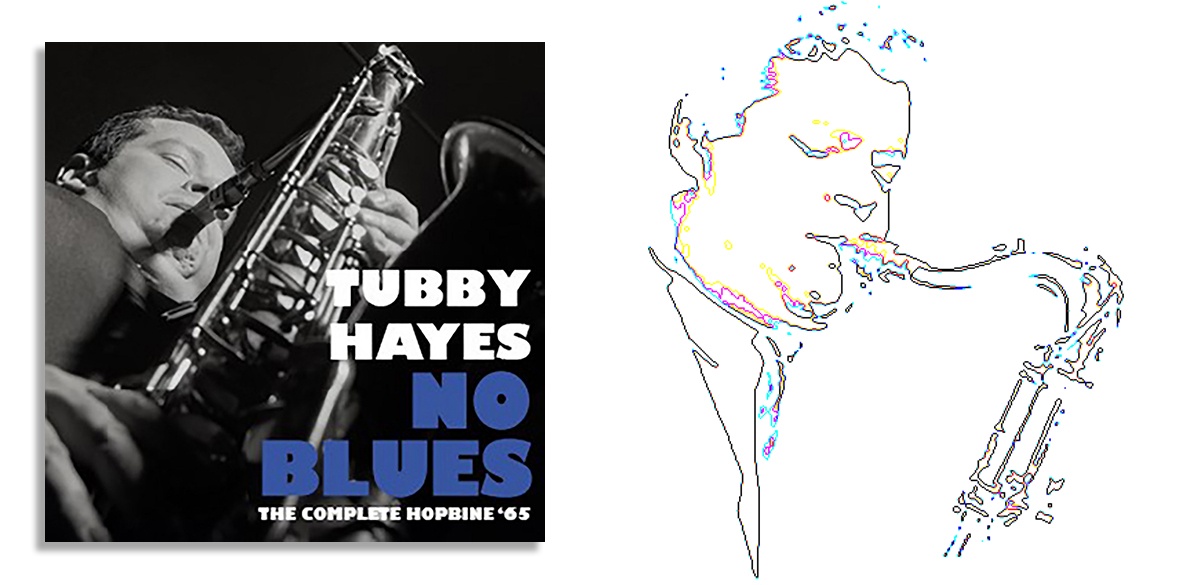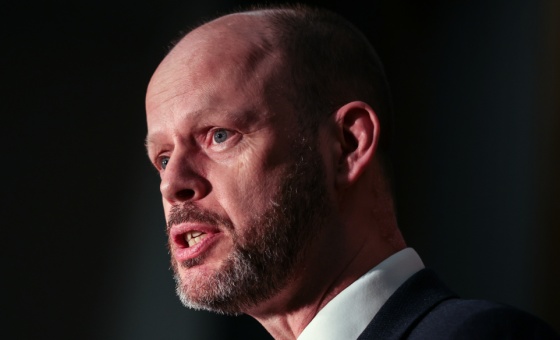This is the last article you can read this month
You can read more article this month
You can read more articles this month
Sorry your limit is up for this month
Reset on:
Please help support the Morning Star by subscribing here
THERE have been many rediscovered tapes of Tubby Hayes’s (1935-1973) live sessions from the 1960s, when the tenor saxophonist was playing at his creative apex. Tubby’s punctilious scholar and biographer and a powerful saxophonist himself, Simon Spillett, considers his double album, No Blues: The Complete Hopbine ’65, to be one of his best and most illuminating.
The Hopbine, a London pub-jazz club in North Wembley, organised by fellow tenor saxophonist Tommy Whittle, who doubles up with Tubby on two of the album’s tracks, was a familiar and receptive venue where Tubby felt much at ease, and his performance is relaxed, full of discovery, impetus and creative energy, and lucky were the patrons who heard it.
Tubby’s co-musicians included the brilliant young bassist Ron Mathewson who was to become one of his regular confreres, and two lesser-known accompanists who were Hopbine regulars, New Zealander Kenny Powell on piano and drummer Dick Brennan.
I asked Spillett why Tubby became such a beacon for other musicians of his era, both in Britain and the US: “He shared something with his idols like John Coltrane and Stan Getz, an ability to marry flawless technique with passionate spontaneous creativity, and his skill at assimilating contemporary jazz language. Bebop and hard bop came naturally to him. It was a winning combination.”
What was it that marked him as a “British” jazz luminary? “Despite his ease with US jazz fashions, Tubby was certainly affected by his apprenticeship in British dance bands. You hear it in his writing for the Jazz Couriers and his own big band. There's a certain sentimentality to his ballad playing too. His tone was something of a starting point for many local tenors — Dick Morrissey, Alan Skidmore and Peter King all cited him as an early inspiration.”
And what about The Hopbine: what did the venue give to those who played there? “The atmosphere was informal. Musicians could relax and create in an environment free of any suggestion of pretence.”
As soon as the quartet bristle into the opening track, Night and Day, you sense its ease and comfort. As for Tubby, his prodigious assurance and audacity radiates from his notes. “Tubby had a genuine confidence in his home-grown skill, which characterised the whole postwar ‘swinging London’ construct during the 1960s. Self-made and self-determined, Tubby was emblematic of the era.”
Mathewson’s delving and swinging bass is well recorded by Ted Lyon’s portable tape machine. “He was certainly Tubby’s bassist of choice from 1966 onwards. He recognised in Ron many of his own musical benchmarks: unshakeable time, instrumental virtuosity and energy, no matter what the groove.”
Powell and Brennan were not to be underestimated either. Spillett says of Powell: ”He was a beautifully elegant pianist in the manner of Tommy Flanagan or Hank Jones — something he evinces on his solo number, What’s New.” Like the sprightly Brennan, he remains virtually unknown and rarely recorded. “Both musicians would have played with Tubby many times in these ad-hoc, pub-bop sessions and like many such players, although there was enough gig work to sustain them, the opportunity to make recordings never really materialised.”
What are his favourite album tracks? “Night and Day shows Tubby’s consistent invention of medium up-tempo, but it’s the ballad It Never Entered My Mind that stands out for me. It reveals the soul of a man many dismissed as an empty technician.”
On two tracks, On Green Dolphin Street and Have You Met Miss Jones?, Tubby and Whittle urge each other on and joust joyfully and with potent skill. “Mutual respect is the key here,” says Spillett. “Tubby and Tommy came from different ends of the tenor saxophone spectrum: Tommy out of Lester Young, Zoot Sims and Don Byas, and Tubby from Rollins, Johnny Griffin and Coltrane. But the contrast works very well — Have You Met Miss Jones, https://www.youtube.com/watch?v=Xw74pGmH_hg, is a masterclass of on-stage inspiration.”
The entire record is a feast of creative excitation and joy. “The informality here is what makes this a stand-out session. It’s not Tubby with his regular band but a busked gig of standard repertoire which proves hands down his stature as a true jazz giant. Like Sonny Rollins or Ben Webster, Tubby could take a few well-known pieces and shape them anew. It’s an aspect of his artistry of which few such recorded examples exist.”
The double album is a special groove in a special place. Get it and hear!
Tubby Hayes Quartet: No Blues, the complete Hopbine ‘65 is released by Jazz in Britain Records
Chris Searle will launch his new book Talking the Groove: Jazz Words from the Morning Star, at the Vortex, Dalston on April 8. All welcome










